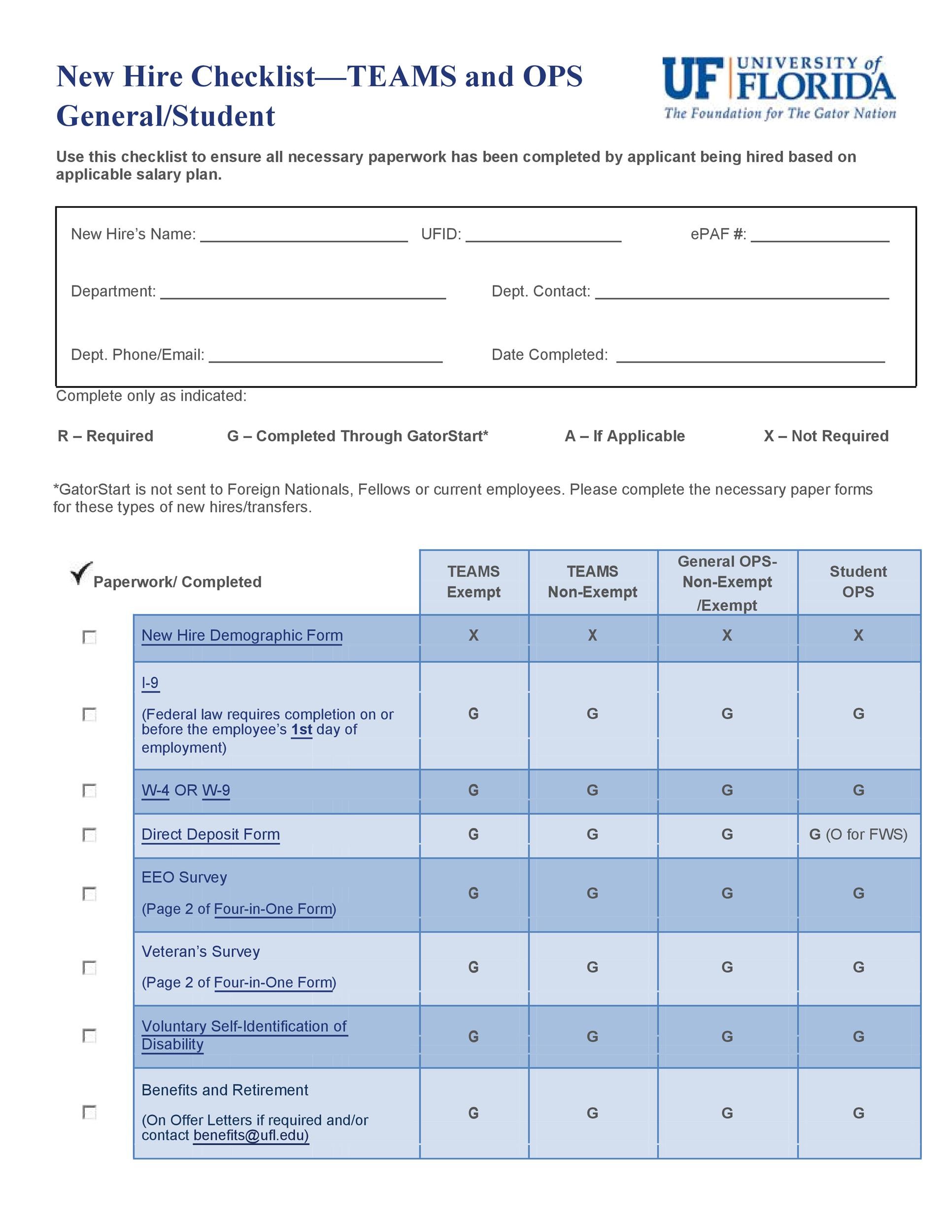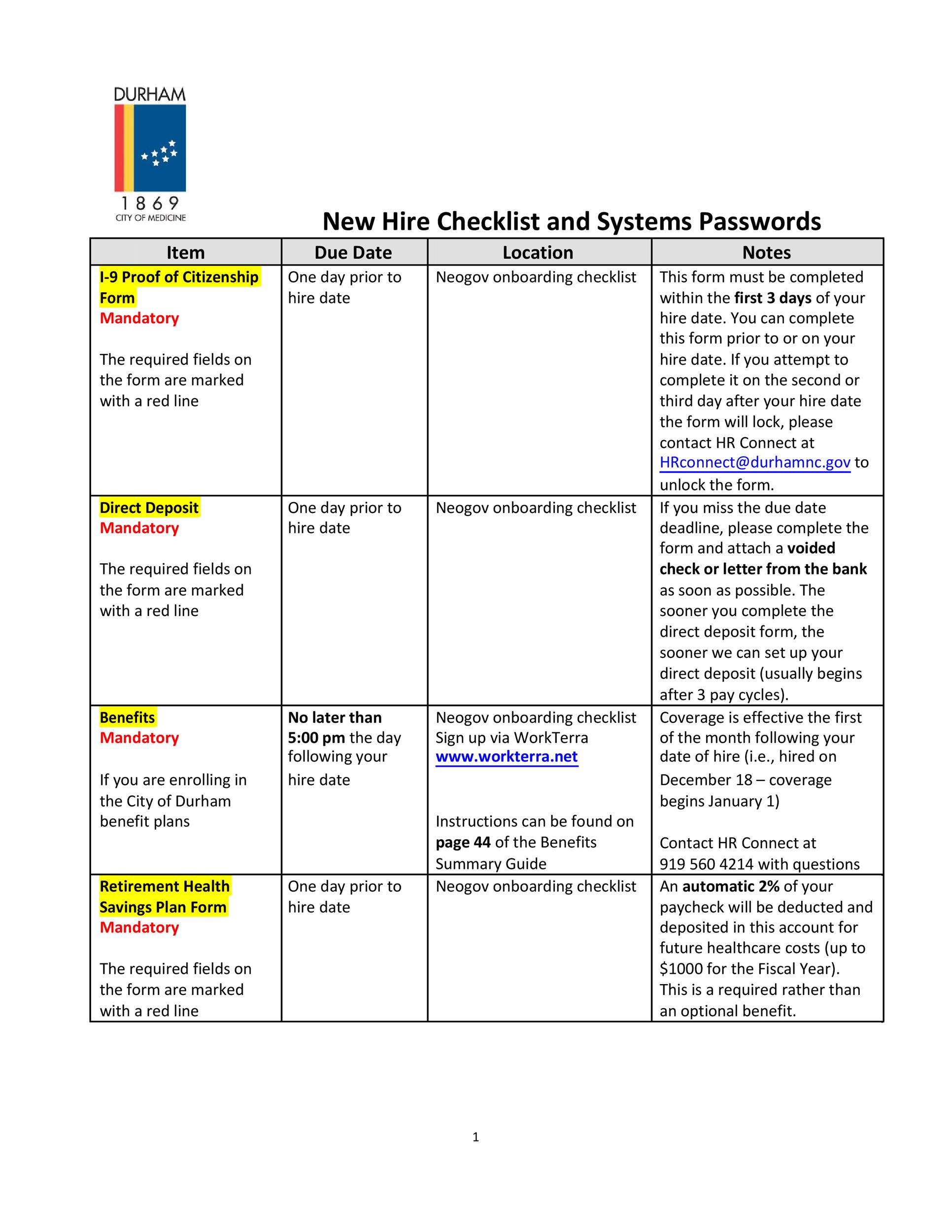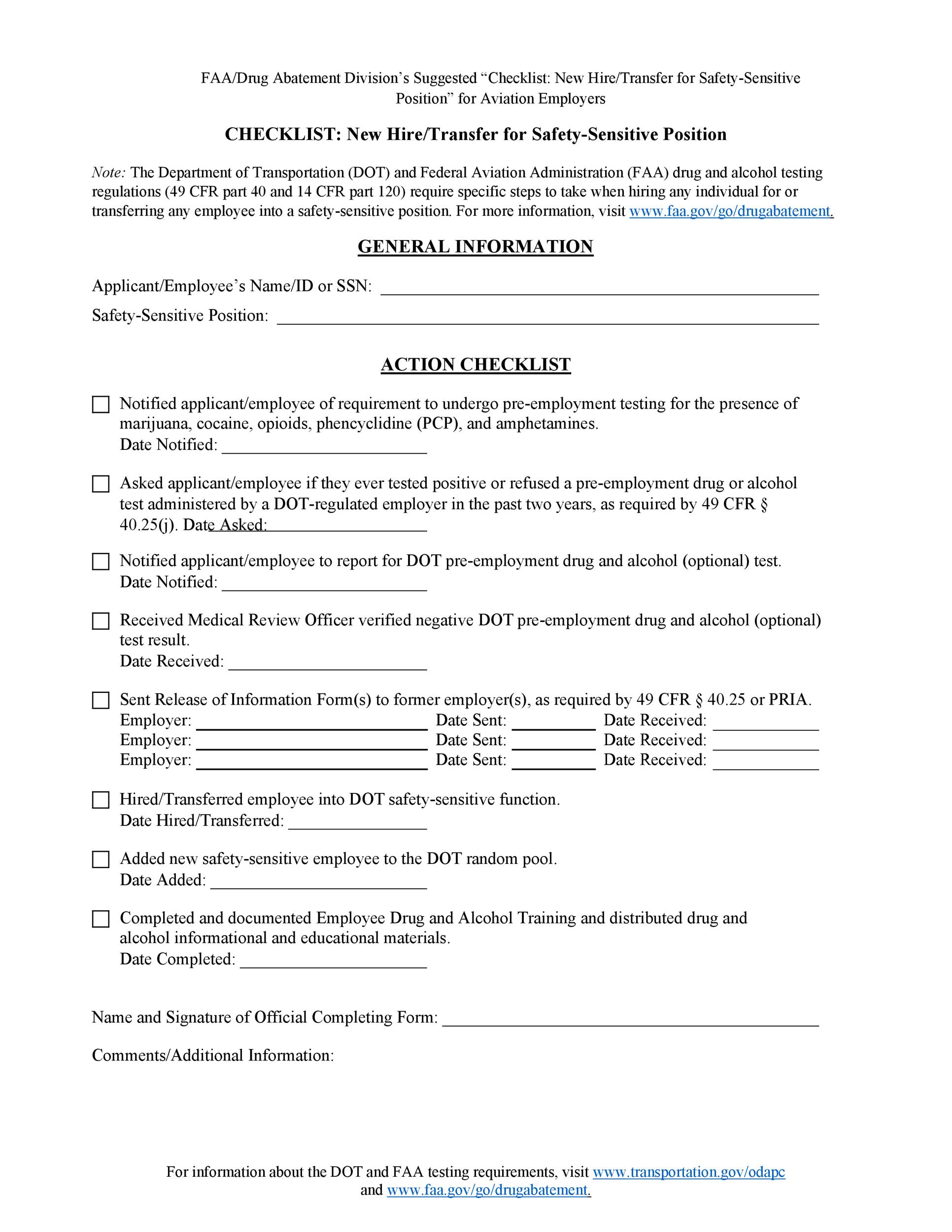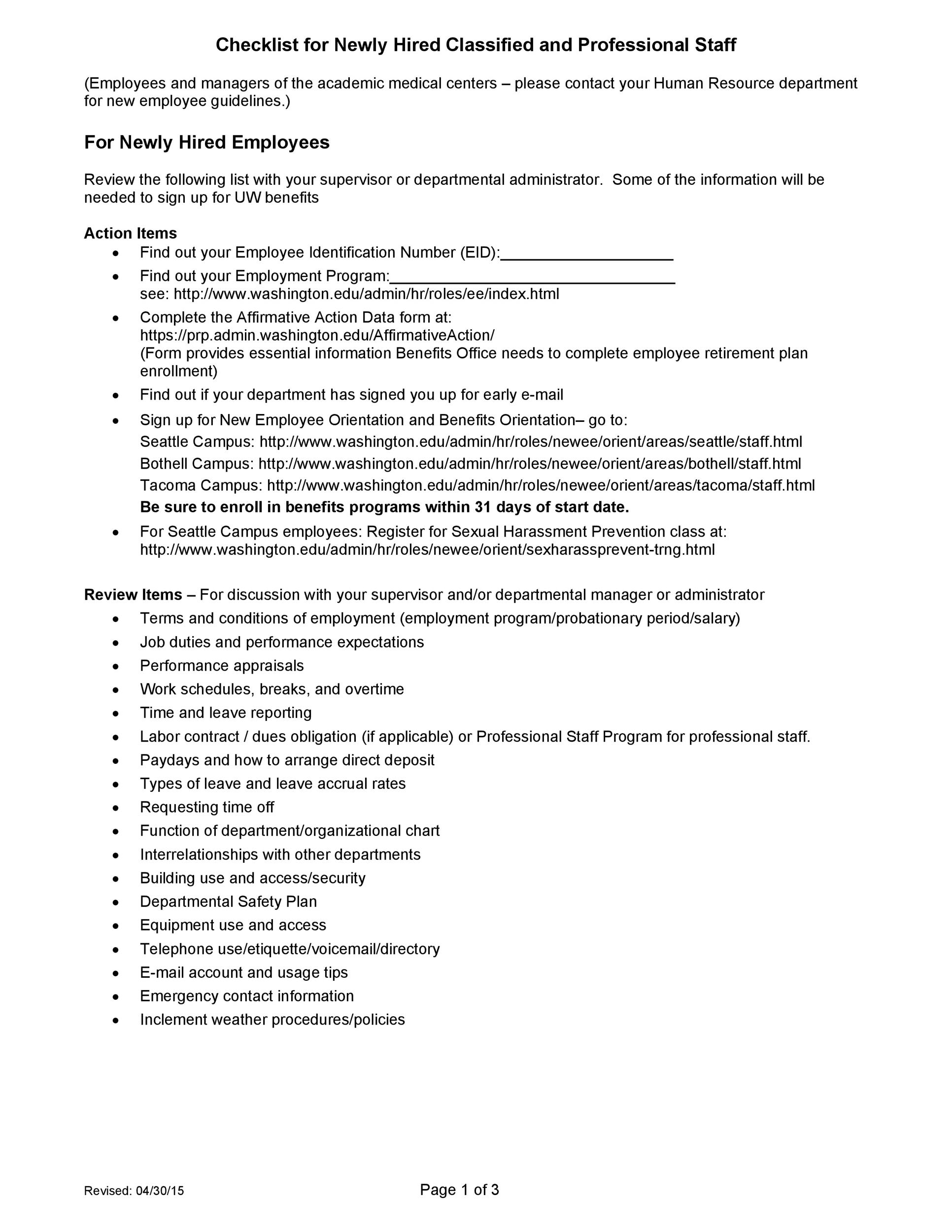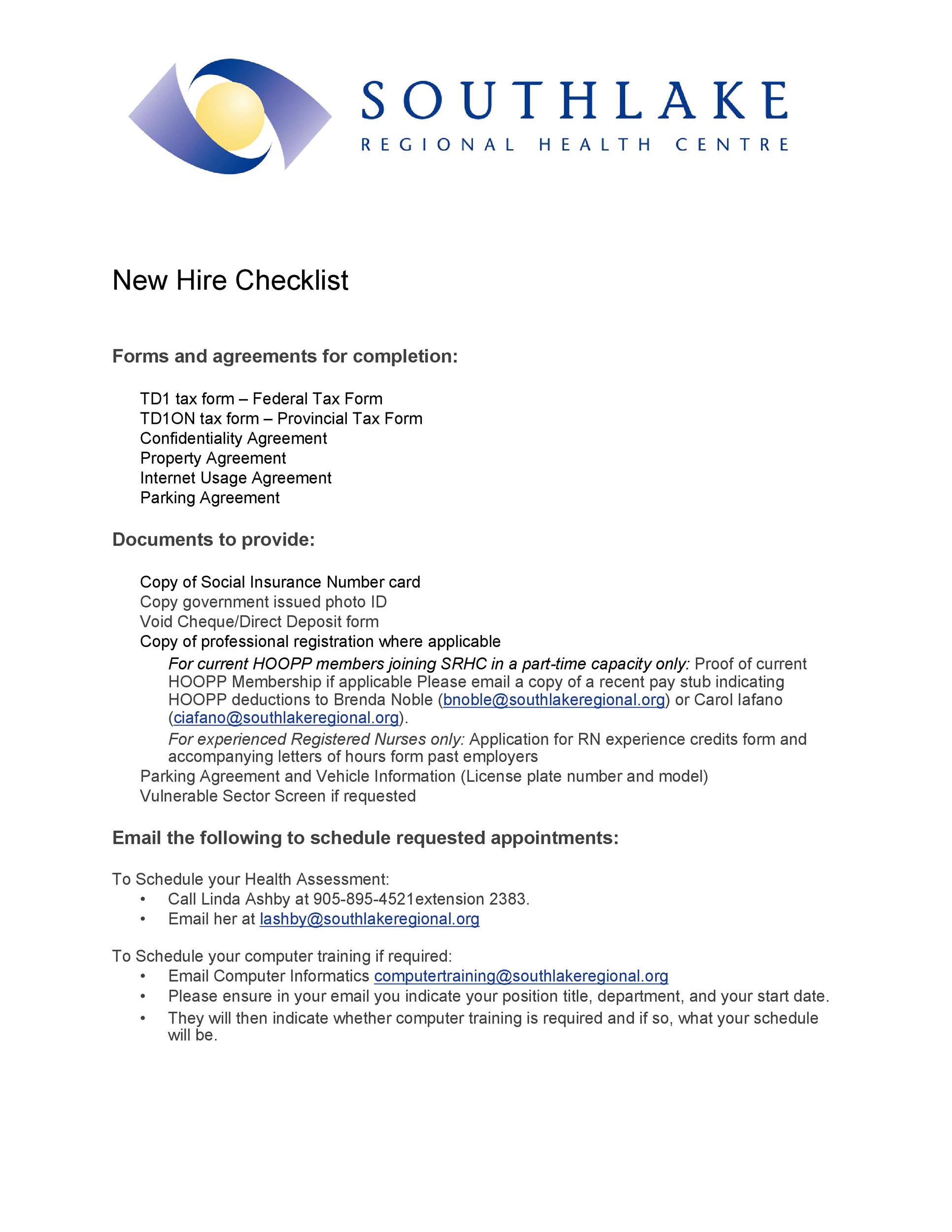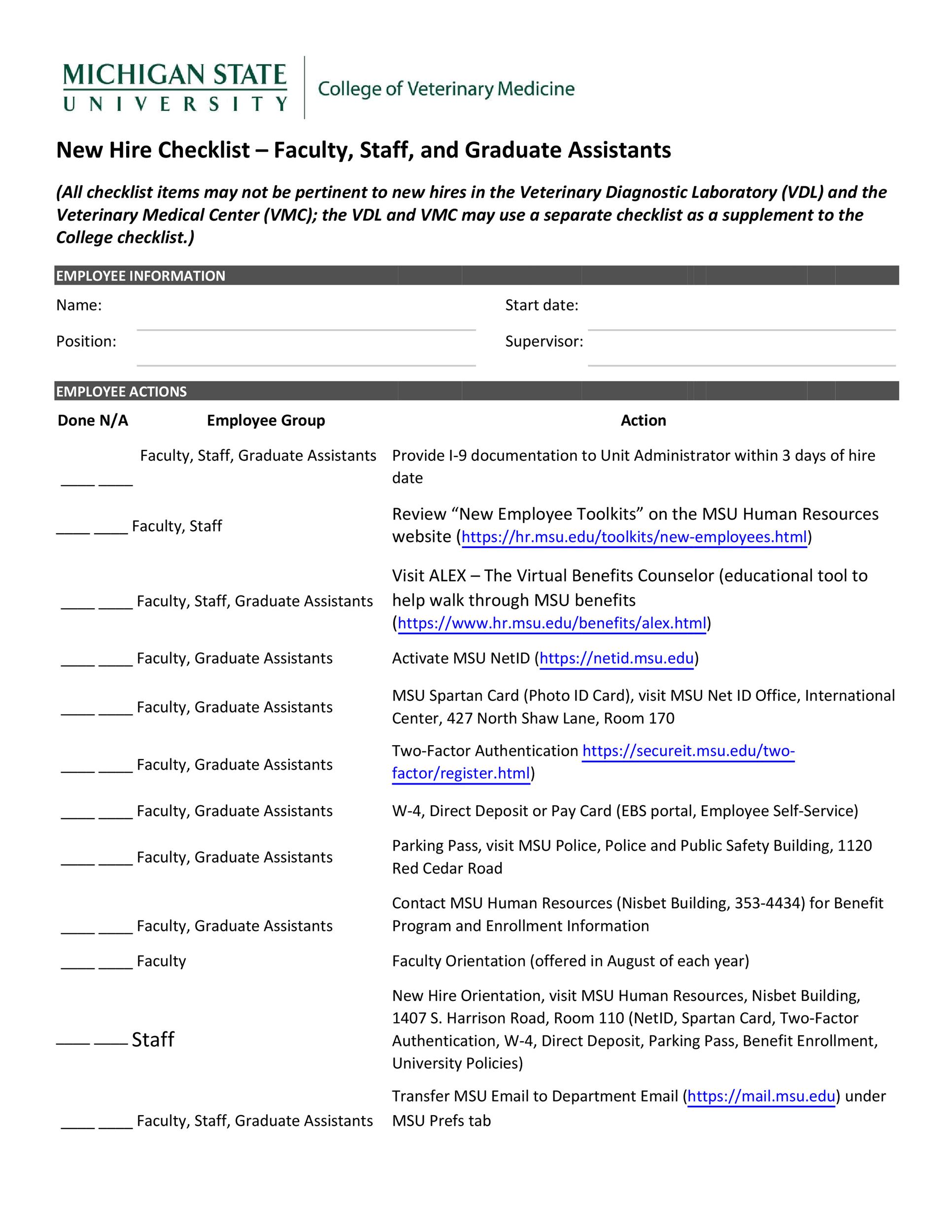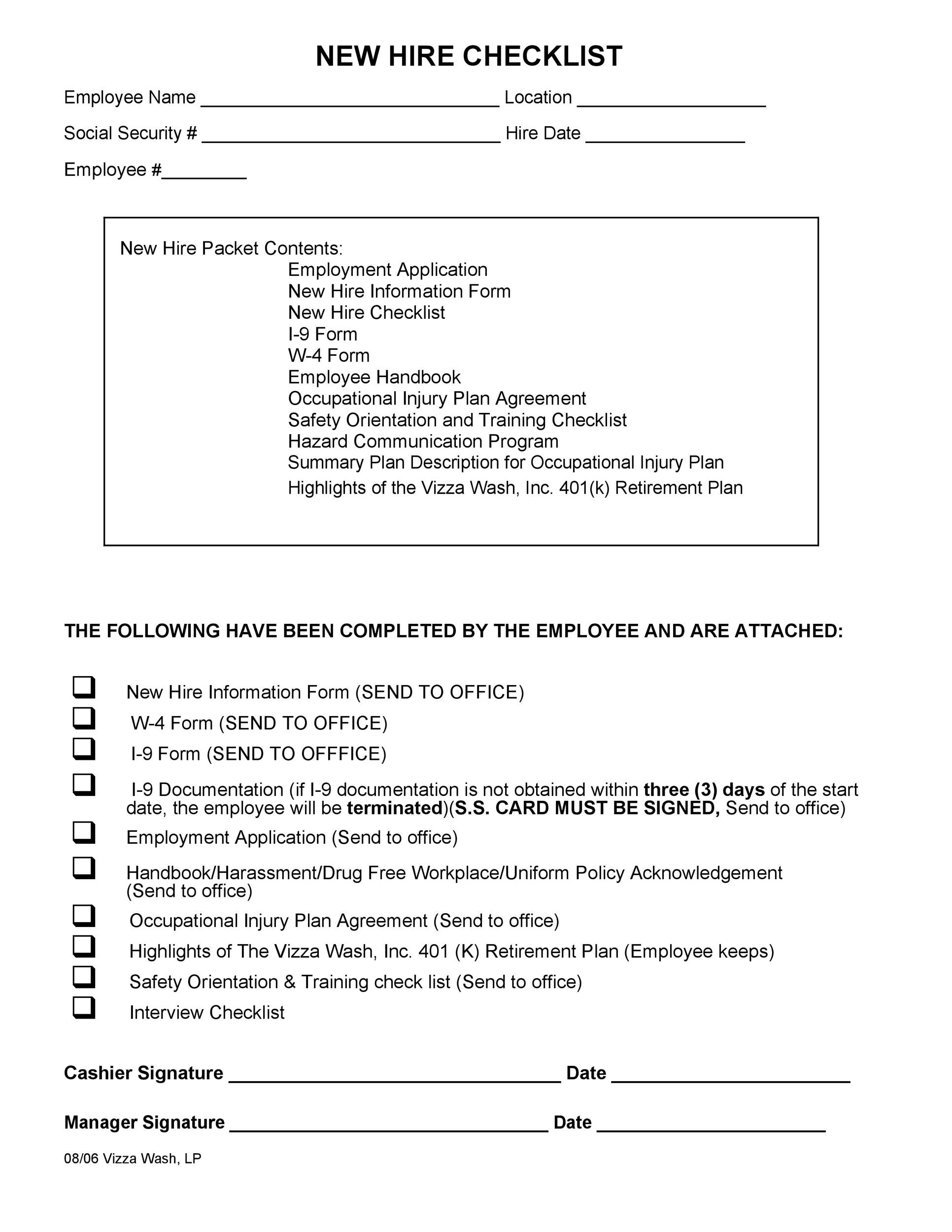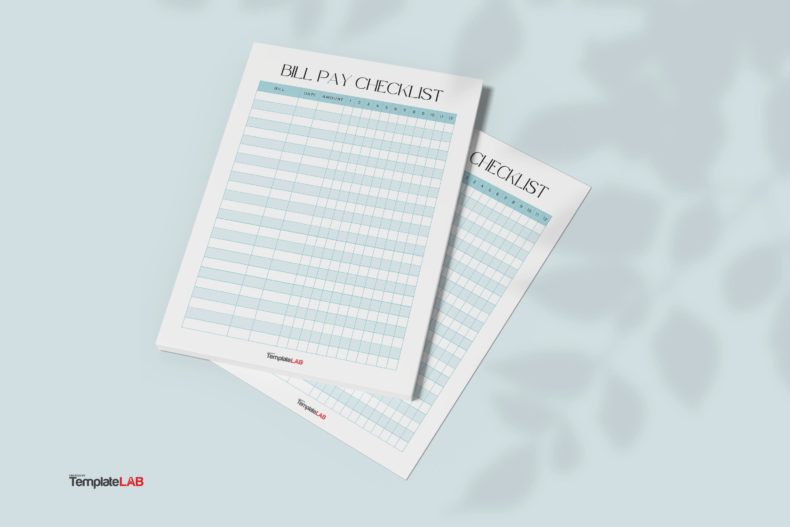After the initial screening and possibly several rounds of interviews for hiring new employees, you’ve finally found one applicant who passes all the criteria. You might think after all the arduous efforts, which would at times be very tedious, that the process is over. If only things were that simple for the HR team. That’s just one step of the recruitment process. Onboarding is the next big thing. There are many steps involved in onboarding the new employee. To keep everything organized and “on track,” use a new hire checklist.
Table of Contents
- 1 New Hire Checklist Templates
- 2 The process of formal onboarding
- 3 New Hire Forms
- 4 The new hire checklist begins even before your new employee comes to work
- 5 New Hire Paperwork
- 6 Important parts of a new hire checklist
- 7 New Employee Forms
- 8 Steps to follow when creating a new hire checklist
- 9 New Hire Orientation Checklists
New Hire Checklist Templates
The process of formal onboarding
Before you take any further steps, the new must get oriented with a written collection of coordinated procedures and policies that can help the employee adjust to his role in terms of socialization and the tasks he needs to accomplish. This is also referred to as “onboarding.”
To make sure that the new hire can benefit from this process, you should create a new hire checklist to streamline the process. Using a new hire checklist template will ensure that every vital step is meticulously followed which will consequently lead to reaching the basic goals with the new hire.
New Hire Forms
The new hire checklist begins even before your new employee comes to work
There’s more to a new hire forms checklist than just defining and following rules. The design of a well-made new hire orientation checklist should also consider the employee’s journey where all possible obstacles to his success are eliminated. Such provisions will ensure that his journey will be a welcoming one. For the employer, the process begins even before the new hire’s first day at work:
- Introducing the new hire to the rest of the employees
Sending the new hire an email about his acceptance is a great welcoming start. The communication should outline the most relevant things he needs to know before reporting for the first day. Moreover, the new employee should also receive a rundown of the next processes in the new hire checklist so that he knows what to expect. - Completing all of the required new hire paperwork
This step is a requirement of any new hire onboarding for the first time. There’s no need to overwhelm the new member by making him fill all the new employee forms, especially on his first day. You can already collect most of the new hire paperwork and accounts then set them up even before the new hire arrives in the office. - Set up the new hire’s training and all internal communications
After the initial welcome email to the new hire, a second email should follow which will contain information about how to set up the channels for internal communication. Login procedures are very important, and you should set them up before the employee’s first official working day. This will give time for your new recruits to make themselves familiar with all of the programs they will take part in. Included in the email are instructions on how to access the company’s online training portals. This is an excellent method for training the recruits on processes, policies, and more. - Prepare any new employee forms and the new hire’s workspace
Everybody involved with the new hire’s position should get the information regarding the employee’s entry and the date he starts working. This includes team members and other related departments. It’s usually part of the supervisor’s job to encourage all the other team members to welcome the new hires.
New Hire Paperwork
Important parts of a new hire checklist
A new hire who can quickly adjust to the work environment will become a more productive employee. Remember that a happy employee will have no cause to look for another job secretly and it is, therefore, paramount to make him feel secure and comfortable, especially on his first few days. Here are the important parts of a new hire checklist to include:
- Orientation Outline
Almost all new hires will undergo an orientation program, also called the induction program, to make them familiar with the company policies and procedures. The nature of programs varies from company to company. Emphasize any unique elements like the introduction of the new hire to the team, his job assignments, and training. Keep a new hire orientation checklist to ensure that the new employee is provided a full and comprehensive induction program. - Employment Contract
You should have sent this document to the new hire with his job offer. Make sure that it bears his signature. - Legal Requirements
Legal requirements will differ, depending upon the state and substantially more so in another country. And these could become more complicated if the company is in a different country or state and the employee works abroad. - Company Requirements
There are many documents and forms that the new employee should sign in accordance with the company requirements. It’s important for the new hire to read all of these documents before signing them. - General Information
There will always be information you need to address which don’t fit under any of the aforementioned elements. So you can include all of this information under one group for the benefit of the employee. - Benefits Package
This topic is usually discussed during the process of hiring. To make everything binding upon employment, there are documents the new hire has to sign to avoid any miscommunication or confusion about the coverage of benefits. - Personal Information
It’s standard procedure that the new hire should provide contact information in case of emergencies. There’s also a need, if applicable, for important medical information like dietary preferences, food allergies, and more. Birthdays are okay too just to add a personal element to your professional relationship.
New Employee Forms
Steps to follow when creating a new hire checklist
A new hire checklist is a great help as it will ensure that no important steps get omitted when introducing new hires to the office. The new hire forms checklist becomes more significant if you’re new to HR and hiring an employee for the first time. It might look complex so to make things easier, you can always download this new hire checklist template free of charge. But if you want to create your own checklist, here are some pointers to consider:
Part 1: For your first new hires
- Apply for the Employee Identification Number before hiring your first employees as the IRS requires this for tax administration.
- Make sure to register your business for local and state taxes.
- Worker’s Compensation Insurance is a requirement for businesses who have one or more new hires to purchase worker’s compensation insurance. You can avail of this either using a private carrier or through the state.
- Post any Required Posters and Notices. Depending on which state your business is and the type of industry you’re engaged in, it’s a requirement to post notices about the labor laws on the office notice board. These labor law posters include details regarding minimum wage rates, at-will employment, laws regarding anti-discrimination, and more. Because these are government issues, state and federal agencies usually give these posters free of charge. You can also go online and check the website of the US Department of Labor. The site can provide you with a questionnaire that’s interactive and will assist you in figuring out which posters to display in your workplace. For any other important notices, you can check with your state office too.
- Determine the unemployment Tax Rate of your state. The State Unemployment Insurance tax rate, better known as SUI, can vary annually depending on the employee’s salary. You can also access this SUI tax rate, which is usually sent to you in the mail every year online. Just log on to your state’s tax registration site and search for it there. There’s a default rate for new businesses.
Part 2: For all of your succeeding new hires
- Conduct Background or Pre-Screening Checks. This is an optional decision, but it’s still a good habit. Doing these checks on new hires will verify their truthfulness during the interview and application. It’s within the bounds of propriety to conduct background checks on new hires. Also, if it’s legal in the state your company is in, you might as well include drug screening tests.
- Obtain a Federal W-4 Form that’s signed by your new hire. Before the new hire’s first day at work, have him fill up the Federal W-4 form. This will specify the employee’s tax withholding preferences. For convenience, the form is readily available on the website of the IRS. Submitting this to the IRS isn’t necessary, but you should keep at least one copy in your employee’s file.
- If this is a requirement in your state, obtain a State W-4 Form that’s signed by your new hire. This will only apply to those states which collect income tax.
- Have your new hire complete Form I-9. This form will verify the eligibility of the employee to work in the United States. Being a citizen, an immigrant or having a working visa makes one eligible for employment. You don’t need to submit the I-9, but you must still keep it in your employee’s file for a minimum of three years, starting on the date you hired him or a year after the employee’s termination, whichever comes later.
- Register with the New Hire Reporting program. It’s required for all businesses to register any new hires to the New Hire reporting program of their state. This is an important registry for the state as it can assist the government to enforce certain policies and procedures.


